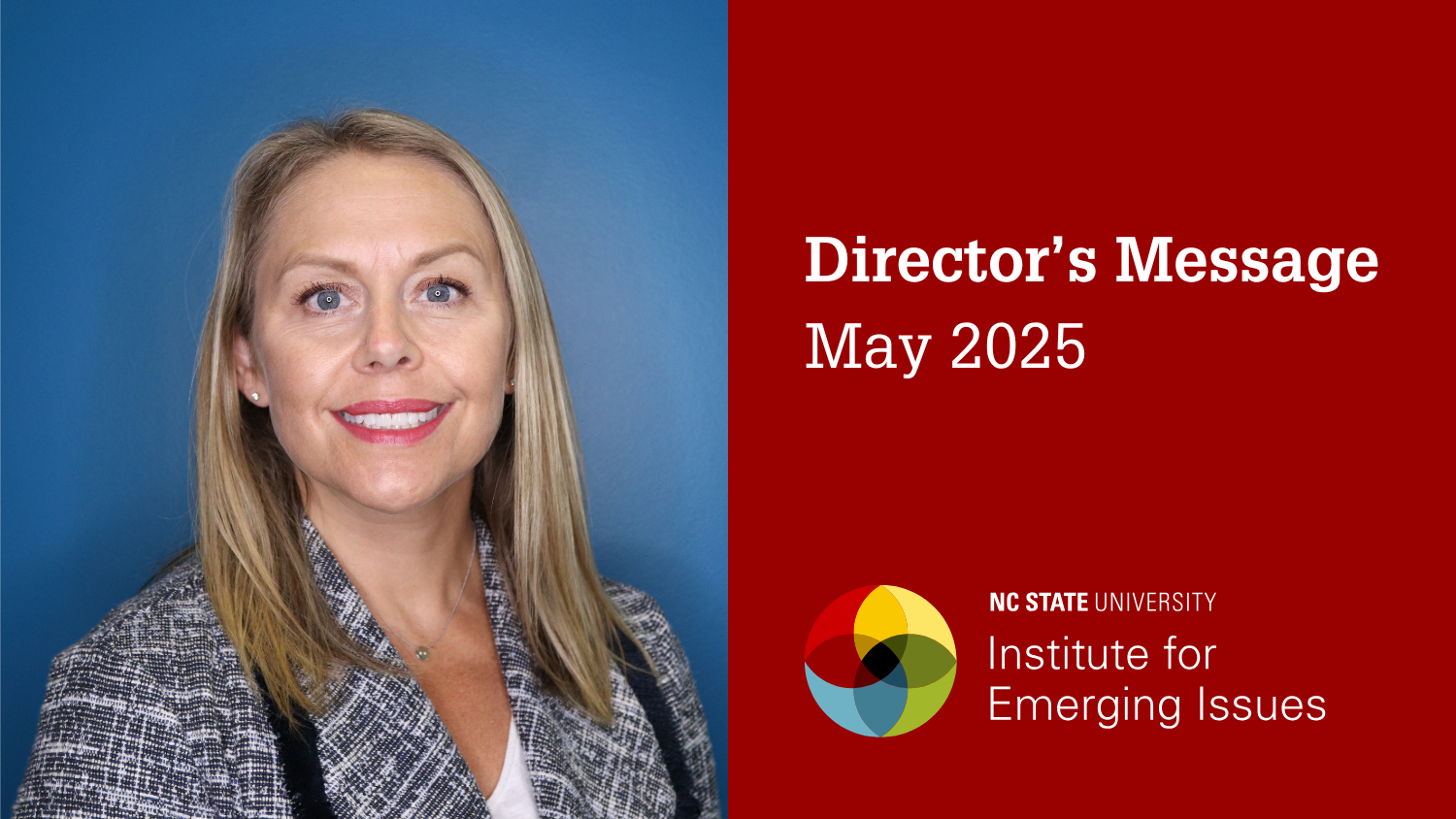Director’s Log | January 2022

Responding to a Punch in the Face
North Carolina’s educational attainment initiative, myFutureNC, is, and has been, in my opinion, the best organized, best imagined public policy initiative in our state in a generation.
At our upcoming virtual Emerging Issues Forum (online, February 8-10 – REGISTER!), we’re going to be analyzing, assessing and saluting the effort to raise up 2 million 25-44 year old North Carolinians by 2030 who have a high-quality postsecondary credential or degree. But the pandemic has brought challenges to even the best-laid plans, so we’re also going to be asking for your help – whether you work in business, education, government or nonprofits. Why? We believe if our state doesn’t meet this goal we’ll be stuck in the mud.
First let’s look at the elements that have positioned myFutureNC so uniquely for success at reaching such a big goal since its launch in February 2019. The approach they have used is a textbook illustration any major public policy initiative should try to follow:
- Build bipartisan, multisectoral support – The state’s top elected leaders, Republican and Democrat, have universally endorsed the goal and remain involved in the initiative. Top leaders from every sector are actively involved.
- Set clear goals – Any one can understand the “big” goal, but the danger of big number goals on a state level is that any given person can say, “Great idea; not my responsibility.” myFutureNC has worked hard to break the big goal into smaller pieces: their projections show that if we change nothing, we can probably get to 1.6 million, so the focus is on how to find those additional 400,000. Now they’re getting even more granular: what does each county need to do to get there?
- Develop clear timelines – It’s not enough to have a distant goal; you need interim goals to track progress along the way. myFutureNC has been breaking the big goal into yearly goals.
- Describe clear benefits – Altruism is great – and rare. To convince almost anyone to do almost anything, you need to be able to answer their questions: “Why should I care?” and “What’s in it for me?” myFutureNC has been helping people from every sector – business, education, government, philanthropy, and nonprofits – understand how reaching the attainment goal will benefit them, AND what the consequences will be if we don’t reach our goal.
But a not-so-funny thing happened on the way to attainment. The poet T.S. Eliot once wrote, “Between the idea and the reality… falls the shadow.” Or, if you like more modern poets, try Mike Tyson: “Everybody has plans till they get hit for the first time.”¹ COVID-19 is hitting the attainment goal hard.
Since the start of the pandemic the total number of people enrolled in undergraduate programs in the US has declined by 6.1% – more than 1.2 million people. Folks stepping away are disproportionately males, low-income individuals and adult learners. In North Carolina that decline is smaller – about 3.1%, or 16,000 fewer students, but at a time when we are trying to increase numbers by 2030, two thirds of all jobs in the state will require either a degree or a high value credential.
So if COVID is the shadow – or the sucker punch – what’s the new plan to get back to the light, knock out the opponent and find the additional 400,000 people?
At the Emerging Issues Forum, we’ll be looking at a critical new part of the fight plan: rallying the full power of local.
It’s a theme we’ve been focused on at IEI for the past five years: we believe that in communities large and small across our state, individuals and institutions and coalitions are developing clever solutions to the toughest challenges we face, and that others can learn from them. Part of our role is to connect the dots of those solutions and share them with others.
When it comes to attainment, the initiative is taking the same approach. At the Emerging Issues Forum, we’ll be looking at:
- The absolute latest data from myFutureNC on where we are on the path to our goal;
- What statewide educational institutions are doing to support local educational efforts;
- How local coalitions are coming together to develop the kinds of credentials and education that make sense to the people in their particular job markets;
- How and why businesses are changing their policies to find and retrain and retain and promote employees.
There is so much to learn from the approaches these people and places are taking.
Y’all come. If we can put them together in the right way, we’ll have a new strategy to knock out attainment.
¹There are catchier versions of this quote out there, but this appears to be what he actually said: https://quoteinvestigator.com/2021/08/25/plans-hit/
- Categories:


